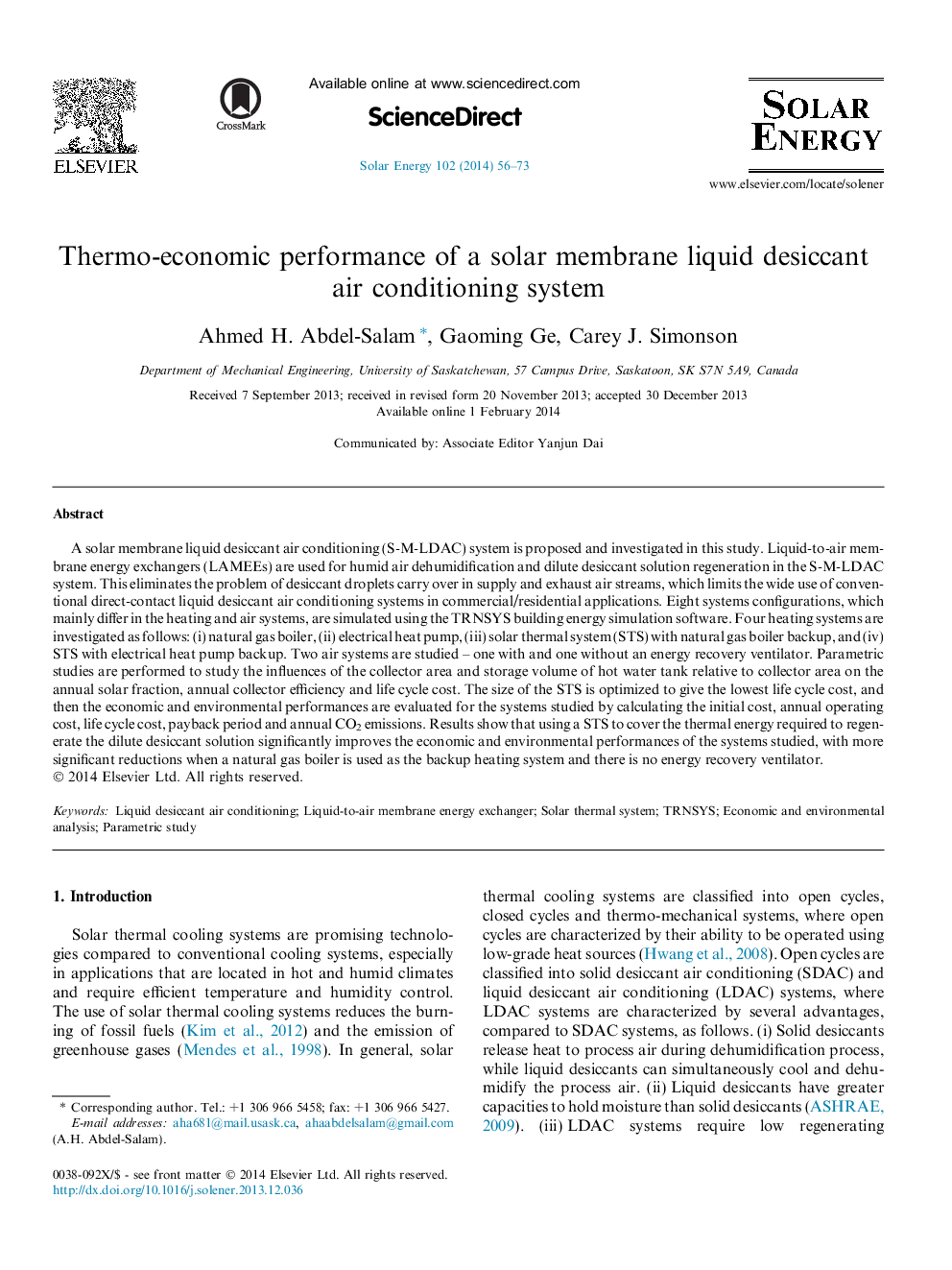| کد مقاله | کد نشریه | سال انتشار | مقاله انگلیسی | نسخه تمام متن |
|---|---|---|---|---|
| 1550130 | 1513116 | 2014 | 18 صفحه PDF | دانلود رایگان |
• A solar membrane liquid desiccant air conditioning (S-M-LDAC) system is proposed.
• The proposed S-M-LDAC system eliminates desiccant droplets carryover.
• Eight systems configurations are simulated using TRNSYS.
• Energy, economic and environmental performances are evaluated.
A solar membrane liquid desiccant air conditioning (S-M-LDAC) system is proposed and investigated in this study. Liquid-to-air membrane energy exchangers (LAMEEs) are used for humid air dehumidification and dilute desiccant solution regeneration in the S-M-LDAC system. This eliminates the problem of desiccant droplets carry over in supply and exhaust air streams, which limits the wide use of conventional direct-contact liquid desiccant air conditioning systems in commercial/residential applications. Eight systems configurations, which mainly differ in the heating and air systems, are simulated using the TRNSYS building energy simulation software. Four heating systems are investigated as follows: (i) natural gas boiler, (ii) electrical heat pump, (iii) solar thermal system (STS) with natural gas boiler backup, and (iv) STS with electrical heat pump backup. Two air systems are studied – one with and one without an energy recovery ventilator. Parametric studies are performed to study the influences of the collector area and storage volume of hot water tank relative to collector area on the annual solar fraction, annual collector efficiency and life cycle cost. The size of the STS is optimized to give the lowest life cycle cost, and then the economic and environmental performances are evaluated for the systems studied by calculating the initial cost, annual operating cost, life cycle cost, payback period and annual CO2 emissions. Results show that using a STS to cover the thermal energy required to regenerate the dilute desiccant solution significantly improves the economic and environmental performances of the systems studied, with more significant reductions when a natural gas boiler is used as the backup heating system and there is no energy recovery ventilator.
Journal: Solar Energy - Volume 102, April 2014, Pages 56–73
